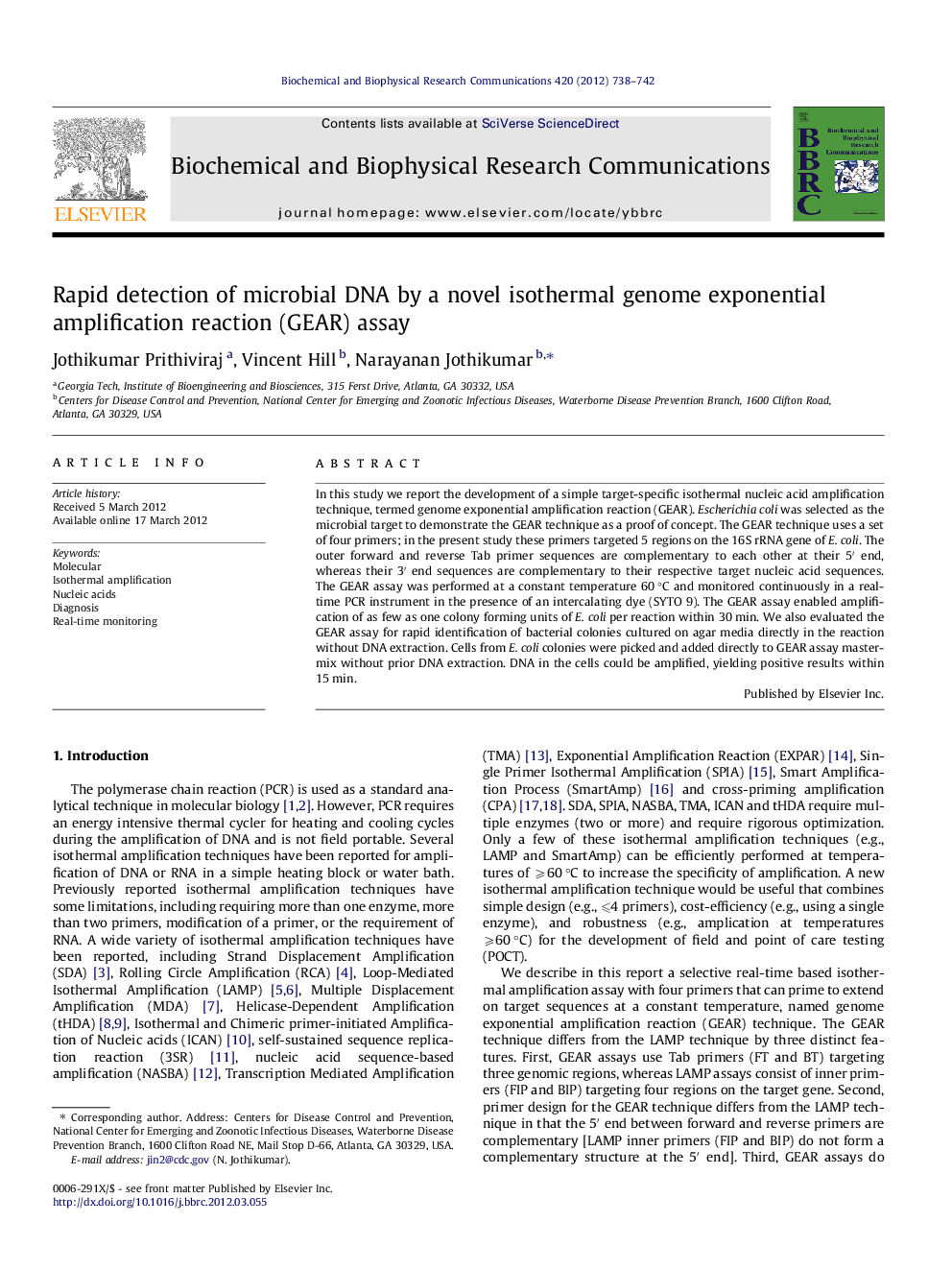| Article ID | Journal | Published Year | Pages | File Type |
|---|---|---|---|---|
| 1929553 | Biochemical and Biophysical Research Communications | 2012 | 5 Pages |
In this study we report the development of a simple target-specific isothermal nucleic acid amplification technique, termed genome exponential amplification reaction (GEAR). Escherichia coli was selected as the microbial target to demonstrate the GEAR technique as a proof of concept. The GEAR technique uses a set of four primers; in the present study these primers targeted 5 regions on the 16S rRNA gene of E. coli. The outer forward and reverse Tab primer sequences are complementary to each other at their 5′ end, whereas their 3′ end sequences are complementary to their respective target nucleic acid sequences. The GEAR assay was performed at a constant temperature 60 °C and monitored continuously in a real-time PCR instrument in the presence of an intercalating dye (SYTO 9). The GEAR assay enabled amplification of as few as one colony forming units of E. coli per reaction within 30 min. We also evaluated the GEAR assay for rapid identification of bacterial colonies cultured on agar media directly in the reaction without DNA extraction. Cells from E. coli colonies were picked and added directly to GEAR assay mastermix without prior DNA extraction. DNA in the cells could be amplified, yielding positive results within 15 min.
► Isothermal amplification of target specific nucleic acids. ► Genome exponential amplification reaction (GEAR) assay only requires four primers. ► Enable amplification of short nucleic acid sequences. ► Direct isothermal amplification from a bacterial colony picked from agar plate.
